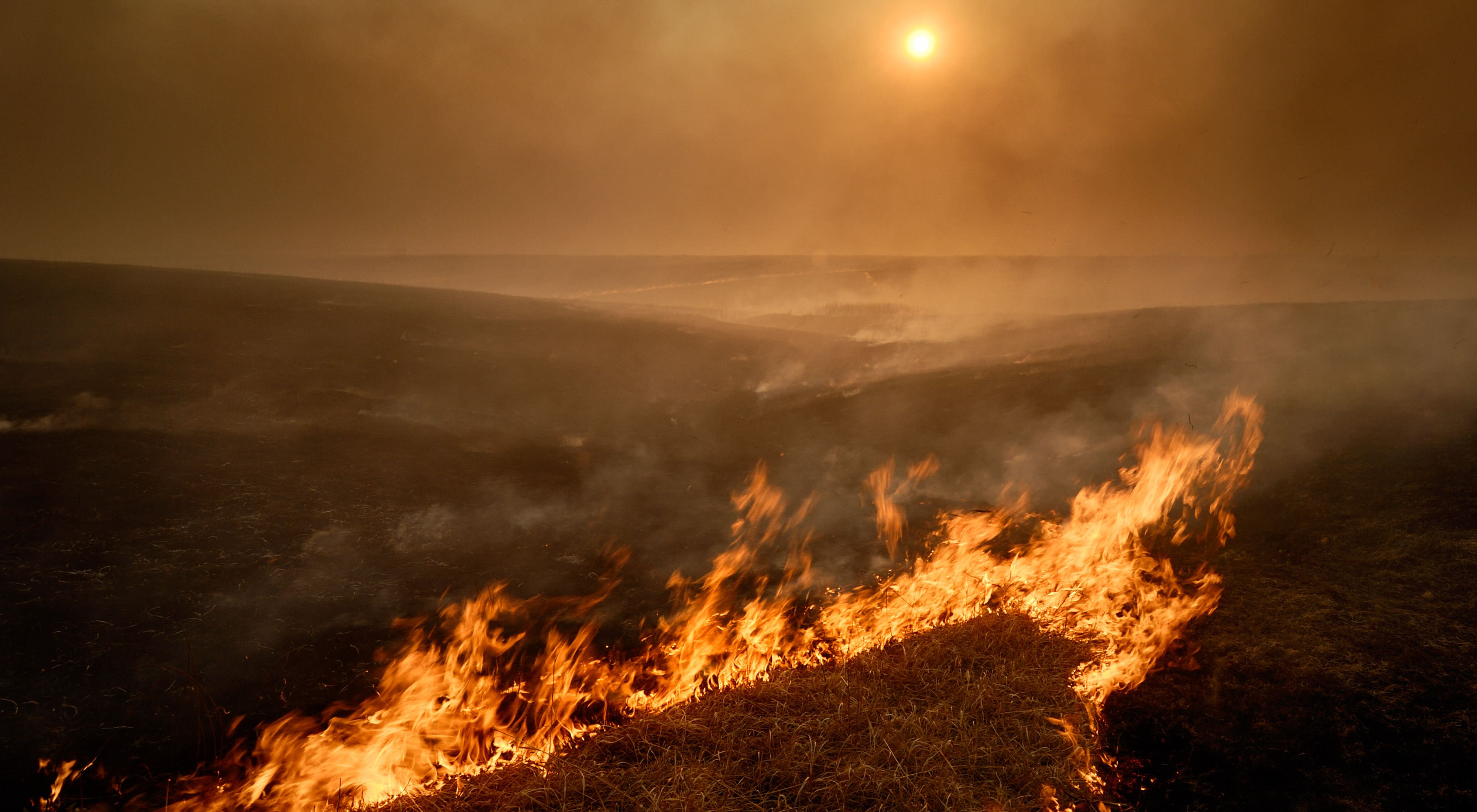Maintaining Fire’s Role
The Conservancy works to maintain fire’s role where it benefits nature and people in the Central Great Plains.
Fire – both lightning-caused and man-made – has maintained prairies of the Central Great Plains for thousands of years. Fire is a key driver in the health and sustainability of grassland natural areas which are home to native plants and animals that require periodic fire in order to survive.
Since European settlement, fire has largely been suppressed in North American grasslands, contributing to ecological and economic degradation from woody plant encroachment. This is particularly evident in the grasslands of southcentral Kansas and western Oklahoma. Much of this eight-million-acre rangeland has been overrun by eastern red cedars and other trees and shrubs. Native to the area, cedars were historically restricted to deep canyons and waterways, where they were protected from fire. Today, cedars alone are taking over grasslands at a rate of 300,000 acres per year in some parts of this region.
SOLUTIONS
The Conservancy is working to expand the use of fire across the Central Great Plains Grasslands Initiative area by reducing barriers for landowners who want to burn, but are concerned about the risk of liability. An important part of this effort will focus on creating a program to provide insurance coverage for land managers who meet established criteria, such as having an approved burn plan. In addition, the Conservancy is facilitating the provision of fire training and equipment to landowners, managers and other stakeholders.
While fire suppression has allowed trees to invade major portions of the western prairie, further east, ranchers in the Kansas Flint Hills and Oklahoma Osage Hills have long used fire to manage rangelands. In this four-million-acre tallgrass region, burning supports economically important beef weight and prevents trees from crowding out prairie plants and wildlife. In some portions of the tallgrass region, changes in fire frequency could benefit both wildlife and livestock production.
The Conservancy is also developing innovative approaches to promoting fire as an ecologically and economically sound grassland management tool. For the Tallgrass zone, the Conservancy has worked with partners to develop a “patch burn” approach – burning roughly one third of a ranch each year instead of the whole thing – as a way to promote a “patchy” landscape that is beneficial to native wildlife, such as greater prairie chickens and other grassland birds. Research has shown not only the benefits of this approach to wildlife, but also that there are no losses to cattle weight gains. In addition, because grazers move toward recently burned areas to feed on the nutritious sprouts that follow a fire, this technique can be used to move cattle and reduce the need for internal fences. Other benefits include reduction of herbicide use and elimination of red cedars and noxious weeds. These solutions benefit both nature and people - ecology and economy.
Agricultural programs and policies, particularly at the federal level, present both benefits and challenges to the natural landscapes, aquatic environments and wildlife populations of the Central Great Plains. Subsidies for corn ethanol production, for example, can drive conversion of native grasslands to row-crop production, one of the most widespread and devastating ecological threats to grasslands. Similarly, subsidies that make crop insurance more affordable also make farming in areas of marginal production potentially less risky, and therefore foster the destruction of native prairie habitats.
